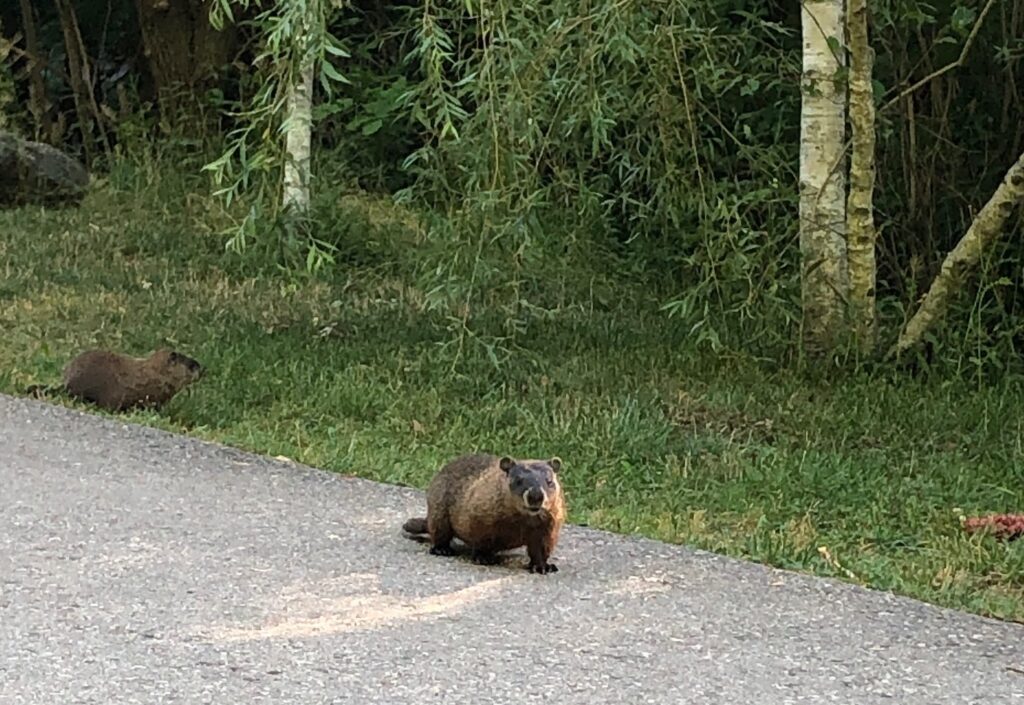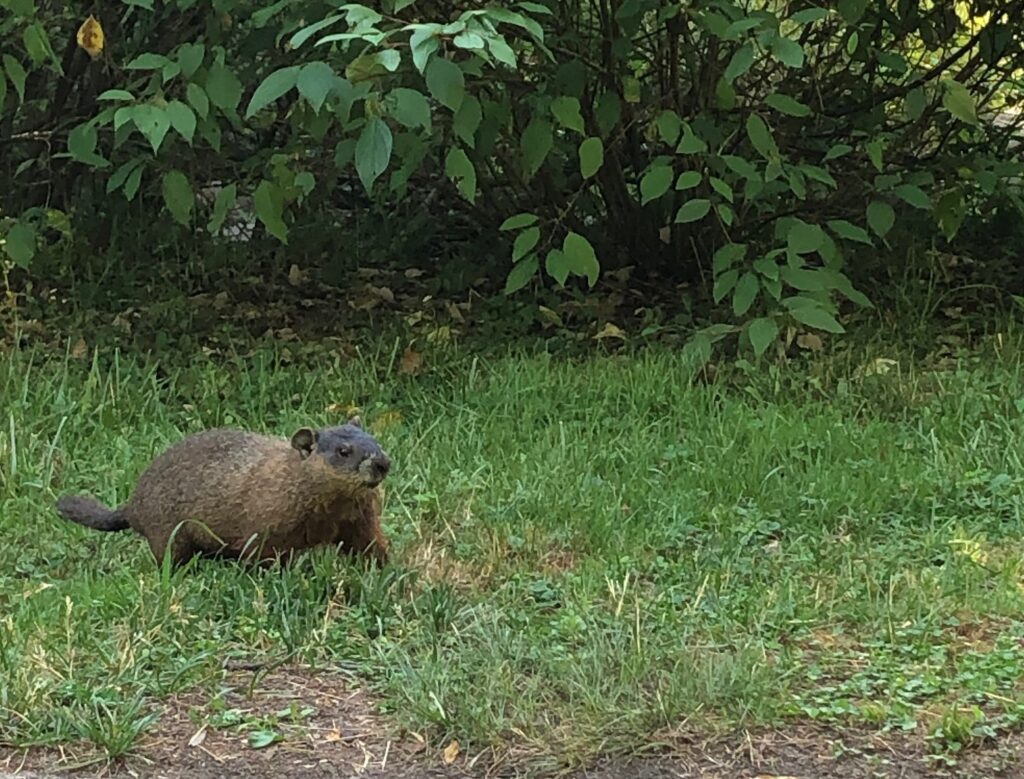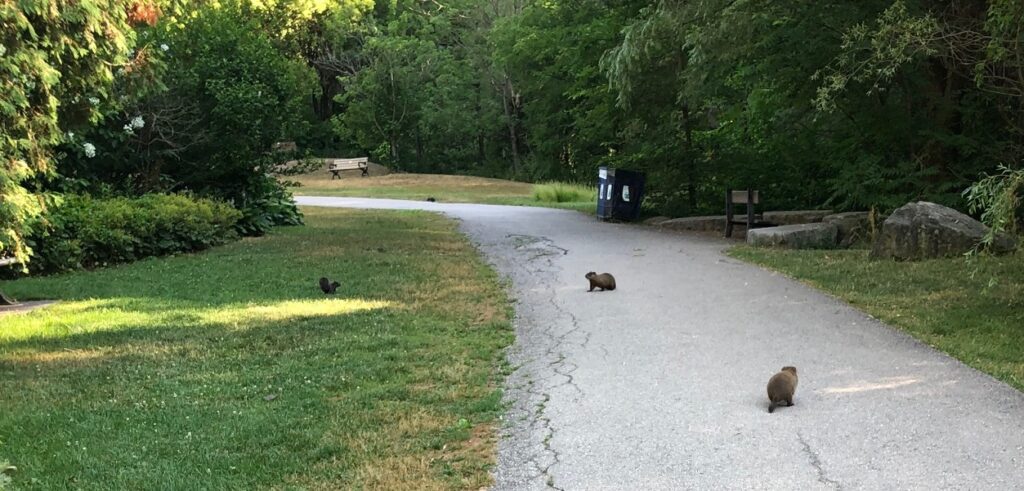
These little groundhogs were out exploring this morning when my friend Zoe and I were happily surprised to come across them on the path in Wilket Creek Park. A young mother and her toddler had stopped to watch the baby groundhogs, too, though they didn’t know what the little animals are.
These juveniles must have emerged from their underground burrow within the last couple of weeks. They were likely born in May, and then started to explore the world of this park, their home, at about 6 weeks old. So that would have been around early July.

Also called woodchucks, yes, as in “how much wood would a woodchuck chuck, if a woodchuck could chuck wood…,” whistle-pigs, or land-beavers, they are part of the family of mammals that includes squirrels and chipmunks. In a segment of that family, the marmots, only beavers and porcupines are larger than groundhogs.
When not enjoying some sunshine, groundhogs are usually underground in their well-designed burrows, which are complete with bedrooms, specially designated bathrooms, spy holes, and entrance and exit.
“All sorts of animals are able to thrive because of the shelter supplied by woodchuck holes. The list includes a wide variety of fur and game animals, some of which destroy huge quantities of farm pests, such as rats, mice and insects. Skunks, raccoons, foxes, rabbits, and snakes all take shelter in woodchuck holes,” according to the Canadian Wildlife Federation.
We were lucky to see these little ones out and about in the sunshine at around 9am since, although they are daytime animals (diurnal), they are most active early mornings and early evenings.

Groundhog baby and squirrel checking eachother out. Photo by Heather Kelly.
